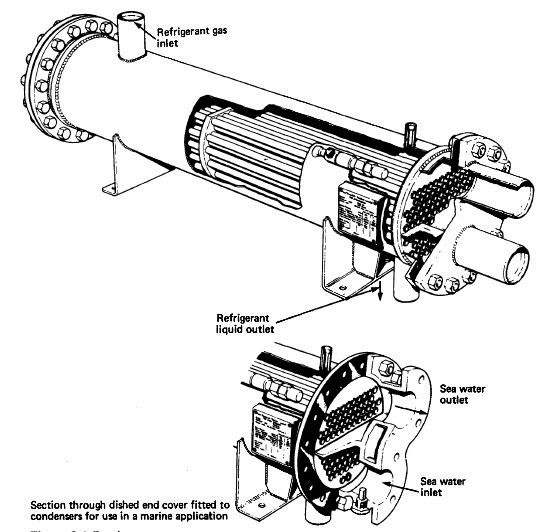
Shell and Tube Type Marine Condensers For Refrigeration System
Marine condensers are generally of the shell and tube type, designed for high
pressures. There may a few coil-in-casing or other types still in use. The coolant
passes through the tubes with refrigerant condensing on the outside.
Condenser tubes provide heat transfer surfaces in which heat from the hot refrigerant on the outsides of the tubes passes through the walls of the tubes to the cooling water inside. Sea water is the usual cooling medium for shell and tube condensers, but fresh water from central cooling systems is increasingly being used. The refrigerant vapour is cooled first to saturation point, then to the liquid state.
Condenser tubes provide heat transfer surfaces in which heat from the hot refrigerant on the outsides of the tubes passes through the walls of the tubes to the cooling water inside. Sea water is the usual cooling medium for shell and tube condensers, but fresh water from central cooling systems is increasingly being used. The refrigerant vapour is cooled first to saturation point, then to the liquid state.


